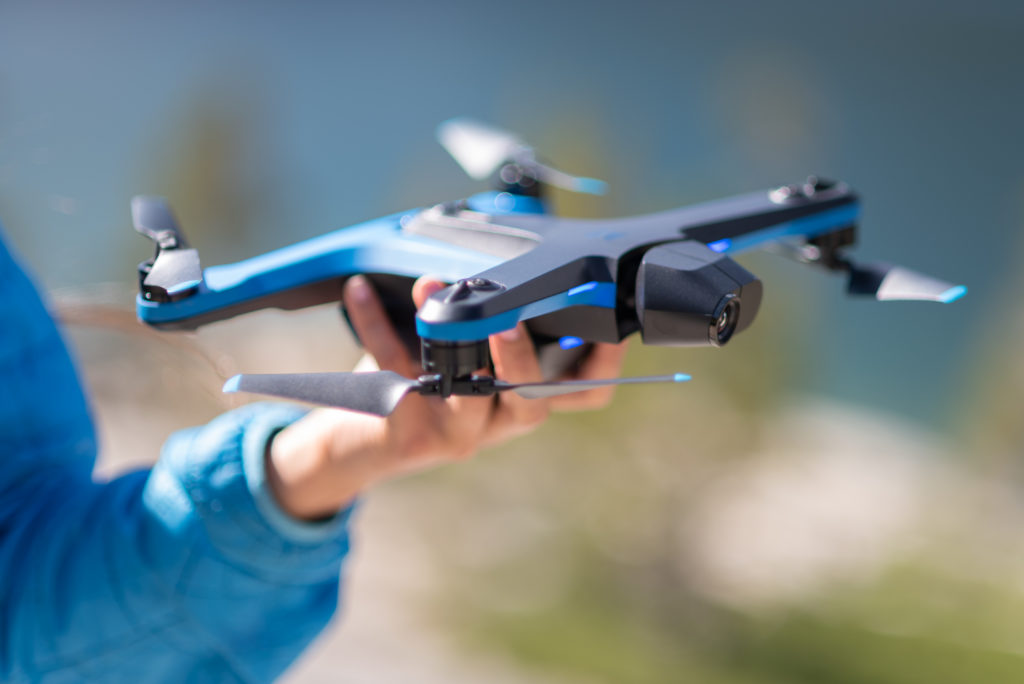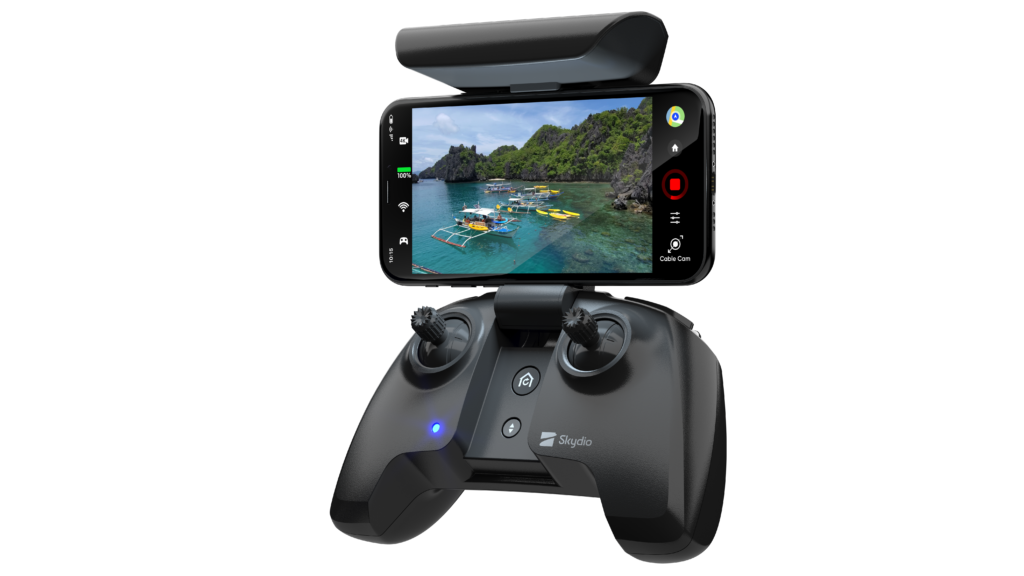When I was speaking with the PR team of a certain drone manufacturer earlier this year, DJI was the elephant in the room. Alluded to but never mentioned, as if uttering the name of the world’s dominant drone company was enough to undermine a new product launch.
Contrast that approach with the unveiling of Skydio’s latest drone, the Skydio 2.
The first visual from the promotional video shows a DJI Phantom 4 flying straight into a road sign before crashing into the ground. ‘Drones are dumb’ is the text that follows. Well, when you put it like that…

Clearly, Skydio isn’t messing around. The comparisons with DJI are a bold and unmissable part of the company’s marketing. It’s refreshing.
When releasing a new drone with a knowing swagger, it helps to have the technology to back it up.
After all, who can forget the hype of GoPro’s marketing campaign, which quickly turned into a horror show as the Karma started randomly falling from the sky in what turned out to be an apt metaphor for the company’s fortunes in the drone business.
Fortunately for Skydio, this US company’s new drone appears to have plenty of substance behind the strut.
Read more: Skydio: The Drone Industry’s Best Kept Secret?
The original R1 was a game-changing drone that combined aerial photography with a level of sense-and-avoid computer vision tech that we hadn’t seen before. There was never any doubting the drone as a feat of engineering.
The aim from Skydio has always been to develop a kind of flying camera crew, a drone smart enough to handle everything while you concentrate on doing something awesome.
But despite largely achieving that, questions were raised over whether the R1 was affordable enough for the consumer market, whether the camera quality was on a par with its internal sophistication, and whether it was versatile enough for drone pilots who like being, well… pilots.
You get the idea: there were a few things to work on. A few tradeoffs made when developing a flying supercomputer, which is fair enough.
We want to challenge the myth that an American company can’t build a superior drone.” – Skydio
Read more: New Developer Platform Could Make Skydio R1 The Go-To Commercial Drone
Fully autonomous cinematography
The Skydio 2 is an attempt to rectify those issues while building on an already industry-leading computer vision system.
The new drone hits the market at a highly competitive price point of $999, significantly cheaper than the Mavic 2 – which is, let’s face it: a huge but very welcome surprise. It’s also over $1,500 cheaper than the original R1 upon launch, which says a lot.
DJI has so far managed to strangle most of the competition from the hardware market with aggressive pricing, but it looks as though Skydio has found a viable way to sell a seemingly superior product for less.

The Skydio 2’s camera has been upgraded: The Skydio 2’s Sony 1/2.3”, 12.3MP camera captures 4k video at 60 fps in full HDR. As has the battery life, which has been bumped up from 16 minutes to 23 minutes on a single battery.
The top speed is up to. The Skydio 2 can hit 36mph. It’s also portable enough for aerial photography on the go. The company says it can fit anywhere you can fit a 13″ laptop.
Under the hood is an NVIDIA Jetson TX2, which is pretty much the fastest, most power-efficient embedded AI on the market. With 256 GPU cores capable of 1.3 trillion operations a second, you aren’t going to be crashing this drone anytime soon.
In fact, the company is so confident in its tech that, providing you’re operating your Skydio 2 within its ‘Safe Flight guidelines’, Skydio will repair or replace crashed drones for free. Yes, really.
We have immense respect for DJI and the products they create, but the industry as a whole is not healthy. The current generation of manually flown drones haven’t delivered on the ideas that have gotten so many of us excited about drones over the last few years. They claim to have autonomy capabilities but it’s still a “gee whiz” side feature, not a trustworthy part of the core experience.” – Skydio
Read more: A Frank Talk With DJI on Security Concerns & and Cape Explains Their Move to Skydio
The Skydio 2 is Available with a Beacon and Controller
There are also some new accessories that will be welcomed by those who questioned the R1’s versatility.
A new controller (which looks suspiciously similar to that of the Parrot Anafi) extends the range of the Skydio 2 to 3.5km. Pilots can get behind the controls with full manual flight, with all the safety perks that come with having full obstacle avoidance in every direction.
This is a huge step for potential buyers who may previously have worried that Skydio’s drones didn’t offer the cinematic flexibility they were looking for.

There’s also a new accessory, the Skydio Beacon, which increases the communication range to 1.5 km and adds GPS tracking for when the Skydio 2 loses sight of you.
As well as keeping the drone on track when you’re out of the picture, Beacon can be used as a kind of controller. With Beacon’s wand feature, you can control Skydio 2 by simply pointing where you want it to go. It can also be used to activate cinematic skills like Dronie or Rocket at the touch of a button.

One thing to bear in mind: The controller and Beacon cost $150 each.
A launch the drone industry needed?
It’s really exciting to see Skydio deliver a compelling follow-up to the R1. The price is competitive, the capability appears unmatched, and the warranty is practically unheard of.
This is a company with complete confidence in its product and the underlying technology it’s spent the best part of a decade developing. We can’t wait to see how the industry applies the new Skydio 2 beyond the enthusiast market.
It’s also long overdue that DJI had some genuine competition. Pilots and industry professionals around the world stand to benefit from a healthier marketplace with more innovation and more companies fighting for business.
Skydio 2: Price and availability
The Skydio 2 is available for $999. Shipments are expected to start in November with a limited supply for this year. You can reserve your spot in line by placing a $100 reservation on the Skydio website.
Malek Murison is a freelance writer and editor with a passion for tech trends and innovation. He handles product reviews, major releases and keeps an eye on the enthusiast market for DroneLife.
Email Malek
Twitter:@malekmurison
Subscribe to DroneLife here.







[…] plus de l'image clé, le Skydio 2+ offre l'autonomie de la Télésérie 2, avec des améliorations matérielles et logicielles significatives. ”Avec une portée […]